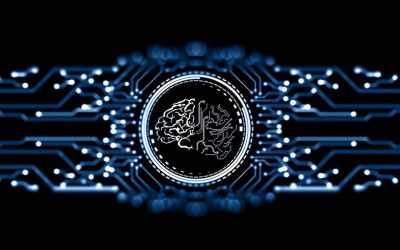Teacher Agnes likes preparing fun activities for her Biology students. The night before class, she created an interactive quiz for her students to determine the different organs of the digestive system. Because her school has recently implemented a learning management system (LMS), she could do this in a drag-and-drop interface, from the comfort of her own home. She notifies her students through the same platform that the activity is available.
In his room, Grade 11 student Anton is doing advanced studying for Bio, his favorite subject. He refers to his school’s LMS to keep himself on track. It has all the information he needs: class syllabus, reading list, and class activities. He sees that Teacher Agnes uploaded a new material, and he opens it excitedly. He tells his groupmates about it via the chat app on the same platform.
During remote classes, the LMS helped both Teacher Agnes and Anton teach and learn online. Now that they hold in-person classes, the LMS enables them to enrich their teaching and learning experience.
Learning Management System 101
A Learning Management System is an application for educators to develop and deliver content, track student engagement, evaluate student progress, and gather data on the learning process. In this central hub, teachers create, organize, and deliver learning materials. On the other hand, students access these resources, engage in the activities, and collaborate with their peers.
How do we use a Learning Management System in the Classroom?
The LMS provides a digital space for the teaching and learning process. Some of its key functionalities are as follows:
- Manage and deliver content. In the LMS, educators create and organize lectures, multimedia presentations, articles, quizzes, assignments, and more. Teachers can share content among peers.
- Communicate and collaborate. Educators and learners can set up discussion boards, chat groups, and other tools to discuss topics, share insights, and promote a sense of community in the physical and the digital classroom.
- Assess and feedback. Teachers create, distribute, and grade assessment activities in the same LMS platform. It enables them to provide timely feedback and deploy interventions for students who need to catch up on the lessons.
- Track progress. In the LMS, school administrators and teachers can monitor students’ progress in terms of engagement, completion, test performance, and more. They can automatically generate administrative reports in a few clicks. They can analyze the performance of a single student or that of a whole class, to determine areas for improvement.
Why use a Learning Management System?
With an LMS in place, the entire learning community benefits in many ways.
- Flexibility, accessibility, and future readiness. While almost all schools are back to face-to-face classes, the digital aspect of learning will never go away. With learning materials hosted online, students can access them day or night to prepare for class. The school takes advantage of a tech-enabled learning environment and stays ready to shift to fully digital learning during emergencies.
- Enhanced collaboration and engagement. An LMS provides a digital platform where students can communicate with their teachers and fellow students wherever, whenever, and in a safe manner. Educators can share resources, activities, and files to help each other bring the best and most engaging content to their respective classes. The collaborative learning environment is conducive to developing ideas, insights, projects, and research.
- Personalized approach to learning. Not every student learns the same way. With the LMS tracking the engagement and progress of students, the teacher can use data to inform how they will assist struggling students or challenge high achievers.
- Efficiency. An LMS streamlines administrative tasks performed by teachers, such as course management, grading, and reporting. Now, they can focus on shaping the minds of the future generation.
Xepto Education delivers LMS to top schools in the Philippines
If you want to discuss how a Learning Management System can help your school improve learning outcomes in this fast-paced, digital world, Xepto Education is here to help. Xepto has trained and onboarded thousands of teachers and students from top schools into the Xepto Learning Management Systems, with 50,000 users and counting. To see a demo, message hello@xeptoeducation.com











